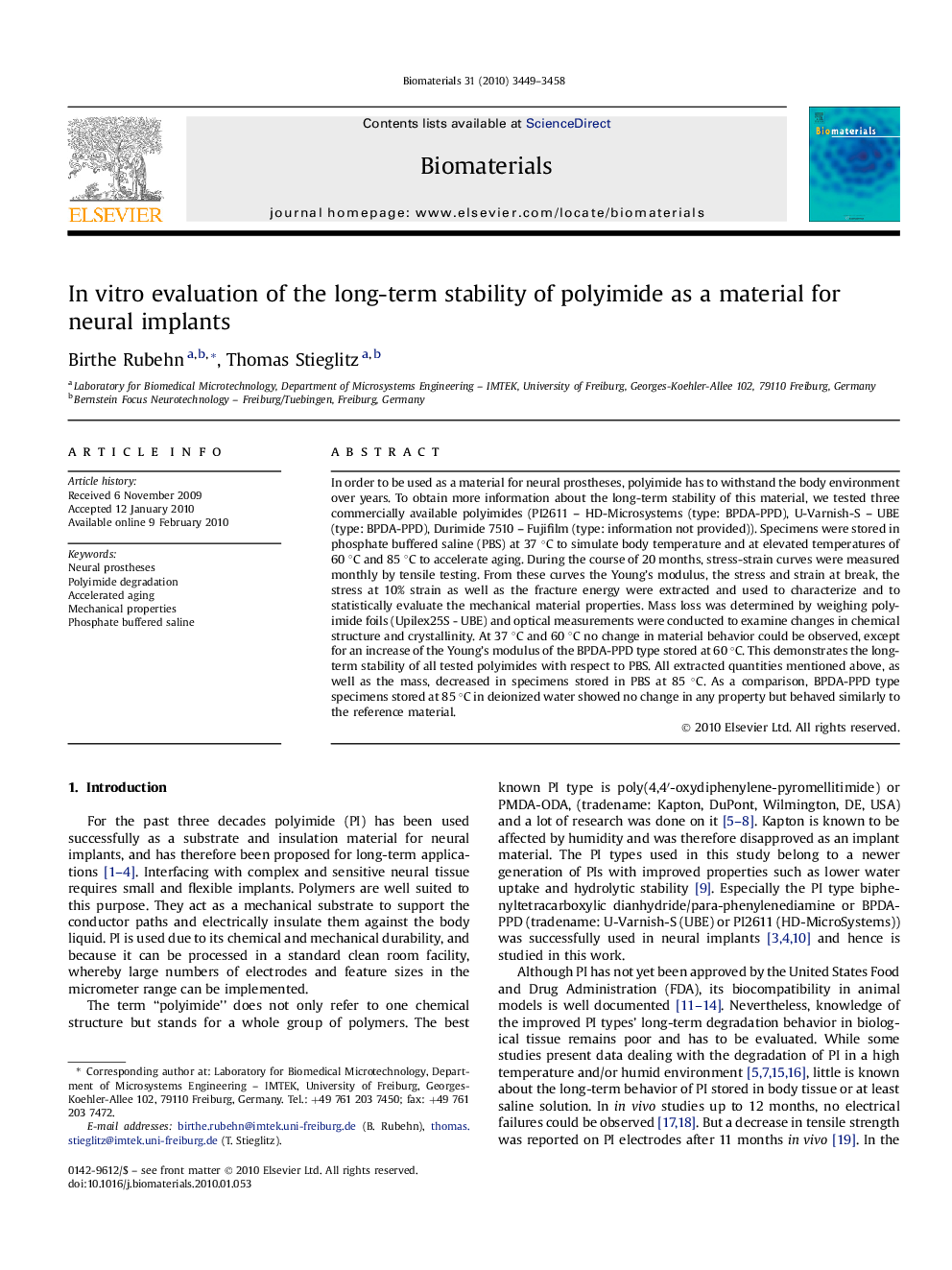| Article ID | Journal | Published Year | Pages | File Type |
|---|---|---|---|---|
| 9696 | Biomaterials | 2010 | 10 Pages |
In order to be used as a material for neural prostheses, polyimide has to withstand the body environment over years. To obtain more information about the long-term stability of this material, we tested three commercially available polyimides (PI2611 – HD-Microsystems (type: BPDA-PPD), U-Varnish-S – UBE (type: BPDA-PPD), Durimide 7510 – Fujifilm (type: information not provided)). Specimens were stored in phosphate buffered saline (PBS) at 37 °C to simulate body temperature and at elevated temperatures of 60 °C and 85 °C to accelerate aging. During the course of 20 months, stress-strain curves were measured monthly by tensile testing. From these curves the Young's modulus, the stress and strain at break, the stress at 10% strain as well as the fracture energy were extracted and used to characterize and to statistically evaluate the mechanical material properties. Mass loss was determined by weighing polyimide foils (Upilex25S - UBE) and optical measurements were conducted to examine changes in chemical structure and crystallinity. At 37 °C and 60 °C no change in material behavior could be observed, except for an increase of the Young's modulus of the BPDA-PPD type stored at 60 °C. This demonstrates the long-term stability of all tested polyimides with respect to PBS. All extracted quantities mentioned above, as well as the mass, decreased in specimens stored in PBS at 85 °C. As a comparison, BPDA-PPD type specimens stored at 85 °C in deionized water showed no change in any property but behaved similarly to the reference material.
